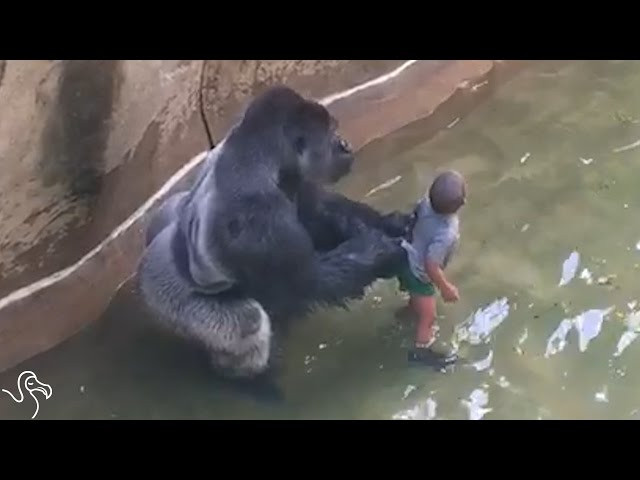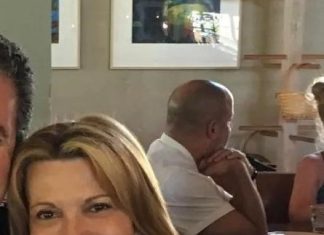The Harambe Incident: A Catalyst for Re-examining Wildlife Conservation and Human Interaction
The tragic loss of Harambe, a majestic 17-year-old western lowland gorilla at the Cincinnati Zoo, on May 28, 2016, ignited a worldwide dialogue that transcended the immediate shock of the event. The incident unfolded when a young boy climbed into the gorilla’s enclosure, prompting zoo officials to make the harrowing decision to shoot Harambe as a means to protect the child. This shocking circumstance has since spurred in-depth discussions about animal welfare, zoo safety protocols, and the broader implications of human-animal interactions.
In the aftermath of the incident, a plethora of experts from various fields—including primatology, animal behavior, ethics, and zoo management—began to analyze the video footage of Harambe’s interaction with the child. Primatologists highlighted the often misinterpreted nature of gorilla behavior, noting that these animals are generally known for their curiosity and protective instincts. Contrary to the initial perception of Harambe’s actions as aggressive, some experts argued that he may have been trying to safeguard the boy, showing a more nuanced understanding of animal behavior. This incident catalyzed a wealth of research aimed at better understanding not just gorillas, but also the misconceptions surrounding wild animals in captivity. Such insights have enriched our understanding of gorilla behavior, suggesting that many of our interpretations are colored by anthropomorphic tendencies. This raises an important question: Are we capable of truly understanding the motivations of non-human animals?
Reevaluating Zoo Safety Measures
The incident has also prompted urgent discussions about how zoos can design their enclosures to better safeguard both animals and guests. Experts in zoo safety have emphasized the necessity for improved barrier designs that serve to protect all involved. This includes not only physical barriers, such as glass or electrified fencing, but also educational signage that communicates the importance of respecting these safety measures. Critics have voiced strong concerns over the zoo’s existing safeguards, arguing they were inadequate for preventing such incidents. This has led to a broader reevaluation of safety standards in zoos worldwide, with some institutions even employing behavioral psychologists to consult on optimal enclosure designs. The Cincinnati Zoo itself has taken strides toward enhancing safety protocols, ensuring that human interactions with wildlife do not compromise the well-being of either party.
Ethical Dilemmas of Emergency Protocols
One of the most contentious debates following Harambe’s death revolves around the ethical implications of using lethal force in emergencies. Animal behavior specialists have pointed out the complexities faced by zoo staff during high-stakes incidents. While tranquilizers are often viewed as a humane alternative, they can take considerable time to take effect, leaving an unpredictable situation that can pose a risk to human life. The Cincinnati Zoo staff had to make a split-second decision to utilize lethal force, a choice that has sparked widespread discussion about the adequacy of existing emergency protocols in zoos and other wildlife facilities. Questions arise: should there be standardized training for zoo staff in crisis situations? How can we prepare for unpredictable human-animal interactions in a way that prioritizes the safety and welfare of all parties? These are pressing questions that the community of wildlife care must address moving forward.The Call for Public Education on Wildlife Conservation
From a conservationist perspective, the Harambe incident has underscored the critical need for public education regarding wildlife interactions. Advocacy groups emphasize that a greater understanding of animal behavior and habitat can significantly reduce the likelihood of similar incidents. This includes campaigns that advocate for the importance of respecting physical and psychological barriers between humans and wildlife. Recent surveys indicate that many people underestimate the risks associated with close encounters with wild animals, which can lead to dangerous and unnecessary situations. By fostering a culture of awareness and respect, it is believed that we can mitigate human encroachments into animal territories. Various organizations have already begun to implement educational programs in schools and community centers, aiming to instill a sense of responsibility toward wildlife in younger generations.Rethinking the Role of Zoos in Modern Conservation
In the broader context of wildlife conservation, Harambe’s death has led to a reconsideration of the role of zoos in society. While many argue that zoos play a crucial part in education and species preservation, others question the ethics of keeping large, powerful animals in captivity. Conservationists advocate for a paradigm shift towards more sustainable practices that focus on preserving wildlife in their natural habitats. This shift may involve investing in conservation programs that protect ecosystems rather than maintaining animals in artificial environments, which can lead to both physical and psychological stress for the animals. Some zoos are beginning to alter their focus, moving towards wildlife sanctuaries that prioritize rehabilitation and long-term conservation goals over mere exhibition.The conversation sparked by Harambe’s tragic end continues to resonate through discussions about wildlife conservation and human responsibilities. The incident serves as a stark reminder that our interactions with animals must be guided by respect and understanding rather than mere curiosity or entertainment. As society grapples with the implications of such events, it becomes increasingly clear that a comprehensive approach—encompassing public education, ethical protocols, and sustainable conservation practices—is essential to prevent future tragedies. The legacy of Harambe challenges us to reflect on our relationship with the natural world and the roles we play in its preservation, pushing us to create a more harmonious coexistence with the creatures we share our planet with.

















